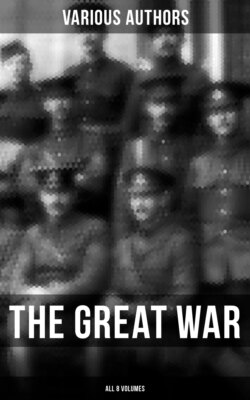Читать книгу The Great War (All 8 Volumes) - Various Authors - Страница 13
На сайте Литреса книга снята с продажи.
THE THEATRES OF THE WAR'S CAMPAIGNS
By F. H. SIMONDS
ОглавлениеTable of Contents
MAIN MILITARY FEATURES
The purpose of this review is to summarize briefly the main military phases of the first year and a half of the Great War. To do this it is perhaps simplest to accept the unity supplied by the three major campaigns of the Central Powers, that of Germany against France, that of Austria and Germany against Russia, and that of Germany, Austria, and Bulgaria against Serbia.
There is no intention of discussing here any ethical or political considerations. Certain historical details are, however, of real interest and value. Thus it is worth while to recall that the present conflict differs little, if at all, from the earlier coalition wars of Europe, in which one nation, numerically weaker, has sought to impose its will upon a group of nations collectively larger, richer, and potentially capable of employing greater numbers of men. In a word, the present war is a pretty accurate repetition of the wars of Louis XIV and Napoleon I, with Germany playing the French rôle.
Now in such struggles it had always been true, and German writers, notably Bernhardi, insisted it would be true of any future war, that the single chance for a decisive victory for the smaller nation lay in crushing the several foes before they were able to get their collective strength in the field, while the superior preparedness, training, general military efficiency of the smaller nation still enabled it to put the superior numbers at the decisive point at the crucial moment.
This whole conception is made perfectly clear by a glance at the familiar and classic parallel of the Napoleonic wars. In 1805 Napoleon, facing a European coalition, which included Russia, Great Britain, and Austria, and was bound to enlist Prussia ultimately, quite as the present anti-German group enlisted Italy, had to solve the same military problem.
Consider what he did. Breaking his camp at Boulogne, which he left in September, 1805, he sent his Grand Army into southern Germany and against Ulm. On October 20 he captured Mack's army at Ulm. On December 2 he routed the Austrian and Russian armies at Austerlitz, and on December 26 there was signed the Treaty of Pressburg, which eliminated Austria from the war. Prussia now intervening, he destroyed the Prussian armies at Jena and Auerstädt on October 14, 1806. In June, 1807, he completed his task by defeating the Russians at Friedland. The Peace of Tilsit, which followed immediately, removed Russia and Prussia from the fighting line, as Austria had already been removed. Between the capitulation of Ulm and the victory of Friedland there intervened nineteen months. More than eighteen have now passed since the fall of Liege in the present war.
The Peace of Tilsit made Napoleon the master of Europe with only Great Britain left in the field against him. The subsequent military and political history which led to Napoleon's downfall has no pertinence in the present discussion. What it is essential to recognize is that the German high command in August, 1914, approached a Napoleonic problem in the Napoleonic fashion.
In German quarters there had been before the war, and there has been since, a debate as to the comparative advantage of making the first campaign against France or against Russia. The fact that the attack on France failed has doubtless contributed to strengthen the case of those who held the view of the elder Moltke and advocated an eastern offensive. But this is merely an academic discussion. What is of interest to us now is to recognize that Germany did decide to attack France, that she did direct against the republic the first and necessarily the greatest blow she could deliver. It was not until April, 1915, that she actually undertook an attack upon Russia, and then the prospect of a decisive victory, on the Napoleonic order, had practically disappeared.
